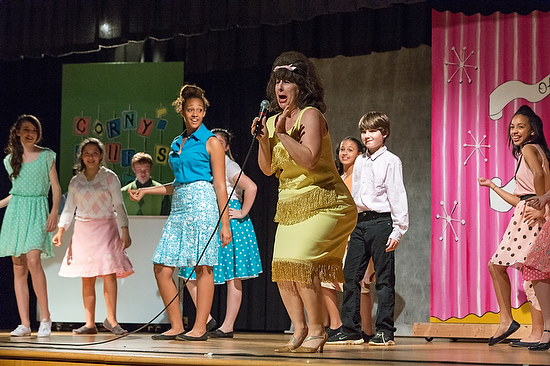 |
| Nikon D4, 70-200mm, ISO 11,400, ƒ/5, 1/500 |
Be Prepared
Here are a few tips to do before you actually start shooting the performance.
- Arrive Early—You need to have some time prior to the curtain going up.
- Fast lens and/or high ISO—You need to have the gear that will let you take photos is low light.
- Find a good seat—You might think the front row is the best seat, but sometimes the back row is the best. If it is assigned seating, you might want to go before you buy a ticket to the venue. In general I find the seats in the center to give your more opportunities than from the side.
- Test Shots—Often you can make some test shots to get your exposure correctly set.
- White Balance—Shooting on Auto White Balance for a theater production is the worst possible time to use this setting. Often the productions use colored lights and this can have your camera correcting which will give your actors funny skin tones. Custom white balance is ideal and second you can try some presets like tungsten to get you close.
White Balance
Having good skin tones is the number one thing that really separates the hobbyist photos from the pros.
My secret weapon is the
ExpoDisc. Call my friend Jody Grober at Roberts Imaging 1-800-726-5544 and tell him I sent you. I buy most all my gear from Jody.
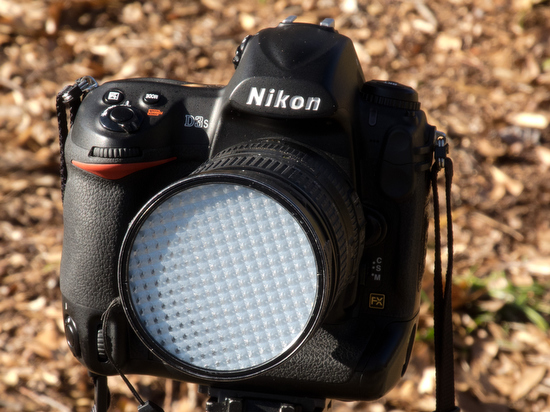 |
| ExposDisc goes in front of the
lens and then you use it to get an incident reading rather than a
reflective reading of the light. |
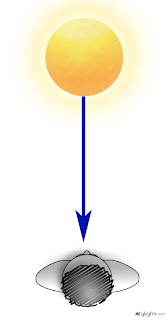 |
| Notice the direction of the light hitting the subject. You move to the same position to get the light reading below. |
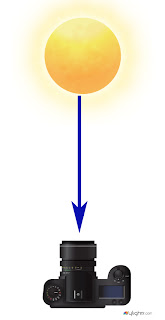 |
| Point the camera toward the direction of the light that is falling on the subject. |
I have found if the subject is facing me and the light is from the side,
I face the camera with the ExpoDisc on it so it is pointing towards the
camera position. The chart above is to help you understand the
concept, but you can modify it.
One way you can modify it is as long as the light is the same where you
are standing, then you could cheat and take a reading from where you
are. The problem that can arise is if they are lit by Window light and
the camera position is in the shade then your color balance will be off
if you do not take it from the subject's perspective.
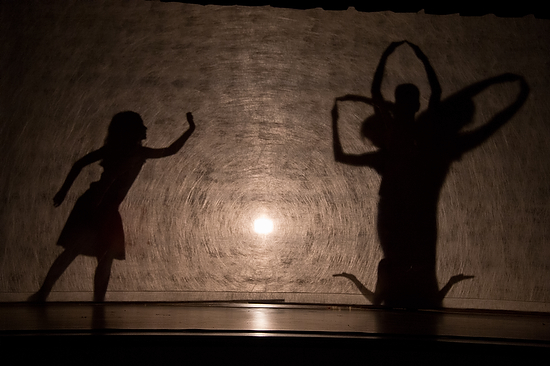 |
| Nikon D4, 28-300mm, ISO 3,600, ƒ/5.6, 1/400 |
If it is suppose to be a silhouette and you get a photo like mine, then great. However, if you are suppose to see their faces then you need to make some adjustments.
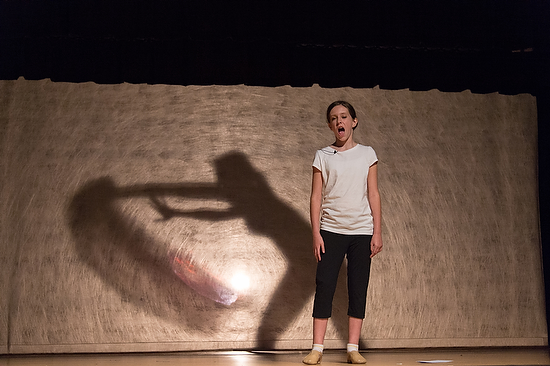 |
| Nikon D4, 28-300mm, ISO 4,500, ƒ/5.6, 1/320 |
There are a few ways to adjust to get a good exposure on the skin tones. First use spot metering if you camera has it. On the Nikon D4 I can choose selective focus and spot metering. I then have 51 different points I can move the focus/spot metering to take the photo.
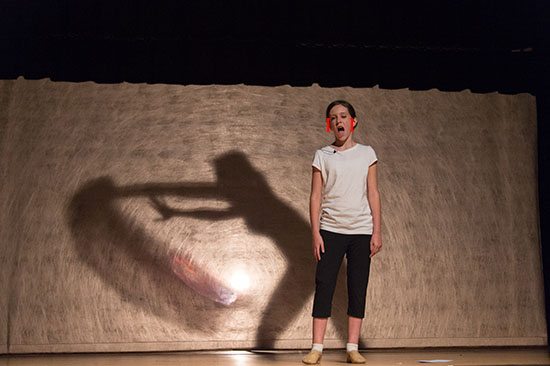 |
| Using spot metering and selective focus with the Nikon D4 I have red brackets I move to where I want the focus and exposure to be set by. |
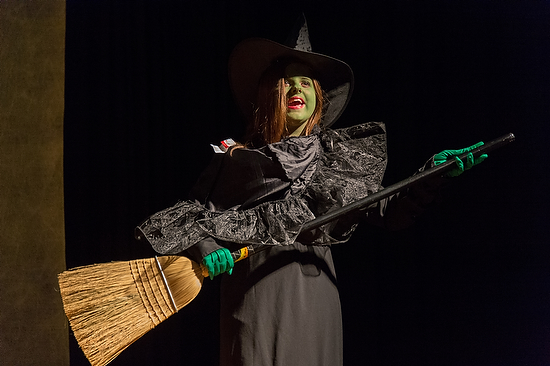 |
| Nikon D4, 28-300mm, ISO 12,800, ƒ/5.6, 1/320 |
Waiting for the light
While you are waiting for the peak moments in the scene, you also have to wait for the best light. For example this witch's hat had her face in the shadows most of the time she was on stage., but when she was singing those dramatic high notes she put her head up and eureka you have your shot.
Post Production is critical
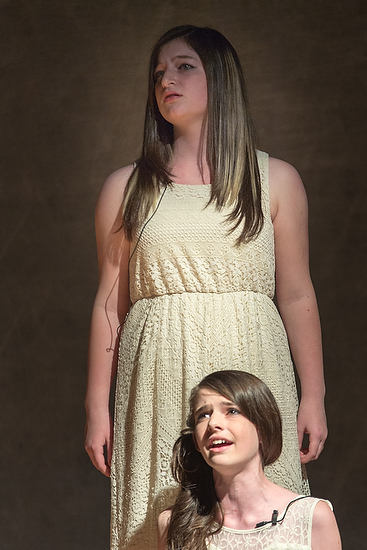 |
| Nikon D4, 70-200mm, ISO 1,2500, ƒ/2.8, 1/500 |
No Flash—That is the rule for stage performances and therefore you are at the mercy of what stage lighting you see. Unless your small town has some incredible endowment for the arts, your lighting on the stage will not look like Broadway or TV shows. Throughout this production the light value on one person would look great and the other person was blown out or silhouetted.
This is where taking the photo into either Adobe Lightroom or PhotoShop can help salvage a photo. This is one of the rare moments I am having to fix photos in post production. It isn't because I screwed up, it is because the lighting just isn't even or at least acceptable for photos.
This is the photo before I cropped it or made changes in post production. Notice that the kneeling actress is well exposed and not blown out. As a general rule you can open up the shadows, but do very little with something that is blown out with no detail.
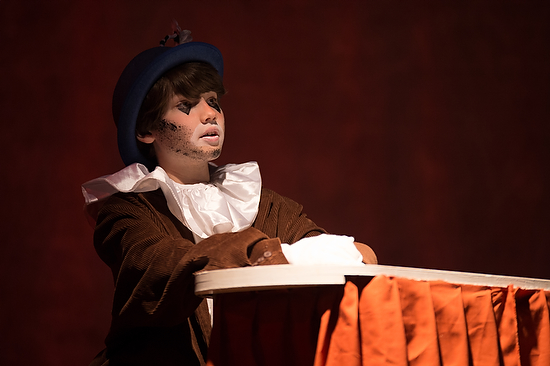 |
| Nikon D4, Sigma 120-300mm ƒ/2.8, ISO 2,500, ƒ/2.8, 1/500 |
Get Close
Don't shoot the full stage all the time. Vary your images by using really long glass, like a 300mm lens or longer to isolate an actor. The lighting guys do this will spot light to make you look at just one place, but you can do it with lens choice.
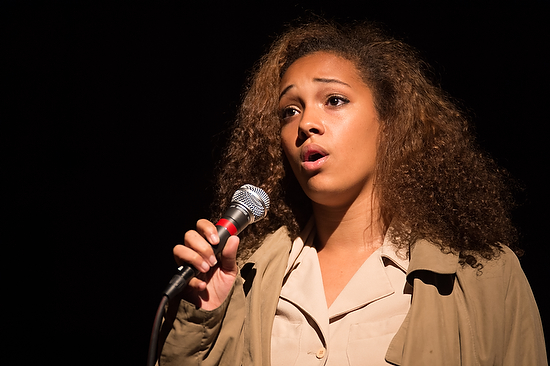 |
| Nikon D4, Sigma 120-300mm ƒ/2.8, ISO 2,800, ƒ/2.8, 1/500 |
Think Marching
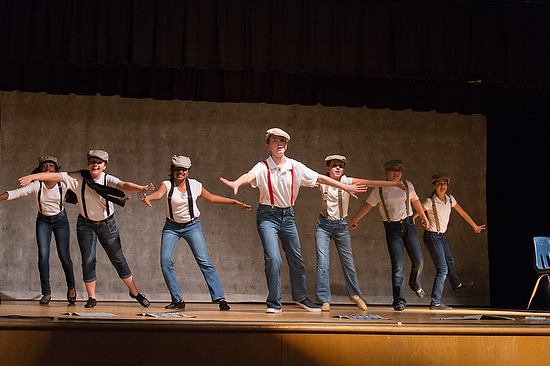 |
| Nikon D4, 28-300mm, ISO 7,200, ƒ/5.6, 1/250 |
When you see the military marching in formation or see marching bands the photos look great with everyone in sync together. I usually find that when everyone is in full stride looks better because it creates motion. Closer the legs are together they look like they are standing still, even tho they are moving.
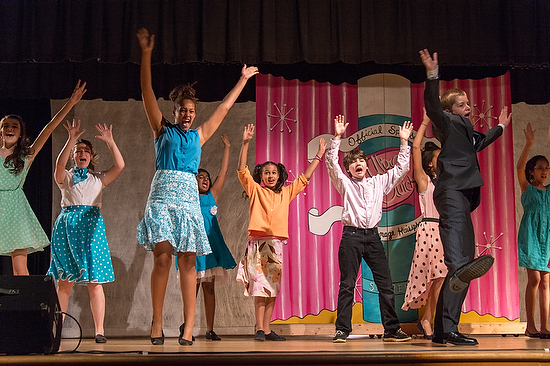 |
| Nikon D4, 28-300mm, ISO 4,000, ƒ/5.6, 1/250 |
Summarizing
Arrive early, shoot a lot of photos and plan on doing some post production to get quality like I am getting here. You camera phone will not get this quality. Nor will having great gear. What gets this quality is experience. So arrive early to do test shots so you are not shooting your first images of the play when it is live.














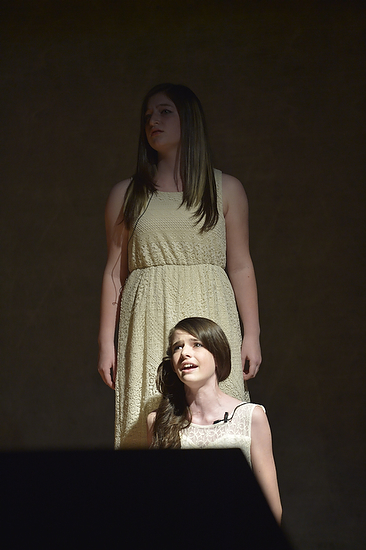
2 comments:
Nice post - White balance especially is a problem in theater - and when lighting guys get creative and use different gels at different times...
Anyway I wondered what you used for sound suppression? I don't have a D4 but both my D3x and D7000 are way too loud for live shows. I have used a Canon 5D MkIII but there is still shutter noise.
Blimps are incredibly expensive and I havent found them for rent outside LA as they are usually used on movie sets.
What do you do about camera noise during a performance?
Chris
For the middle school performance the sound wasn't an issue.
I have used the Nikon P7000 when on TV or movie sets in the past. I prefer this over using a blimp.
I would recommend if someone wants to do this and not interfere with noise to look at the Nikon V2 system or the Fuji X series of mirrorless cameras.
I blogged on the sound being an issue here in the past http://blog.stanleyleary.com/2011/11/nikon-p7000-bailed-me-out-when-my-nikon.html
Post a Comment